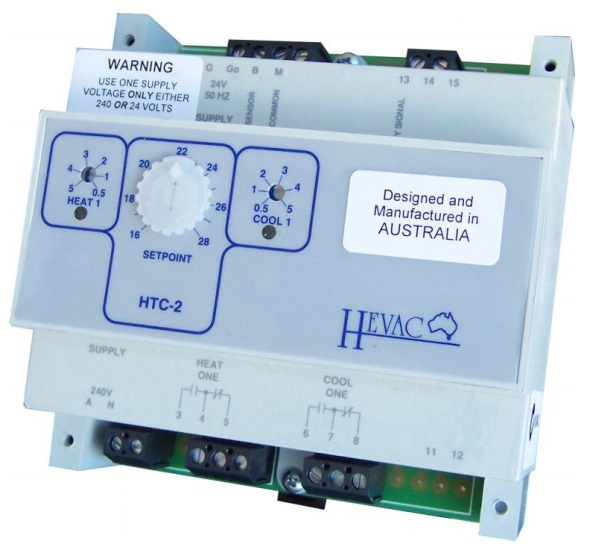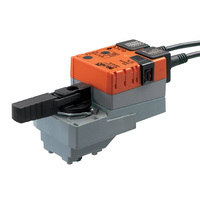Comprehensive Guide to Stand-alone Controllers & Thermostats
Stand-alone controllers and thermostats are essential components in modern building automation systems, often integrated with safety solutions from Gas Alarm Systems. These smart HVAC controllers control various aspects of a building, such as temperature, humidity, and lighting.
This comprehensive guide will discuss everything you need to know about a stand-alone controller and thermostats and why they improve energy efficiency.
What Are Stand-alone Controllers?
Stand-alone controllers are designed to manage HVAC systems without installing a Building Management System (BMS). They control temperature, humidity, and air quality by directly interfacing with heating and cooling units. These standalone controllers are particularly beneficial in smaller buildings or remote locations where centralised control is impractical. However, larger systems tend to have issues with scalability to offer a balanced view.
What are the Key Features of Stand-alone Controllers?
Some of the critical features of a stand-alone access control system include:
- User-friendly interface: Stand-alone controllers typically have a simple and intuitive user interface, making them easy to operate.
- Programmability: These controllers can be programmed to follow specific schedules or adjust settings based on occupancy patterns, resulting in energy savings.
- Remote access: Some stand-alone controllers have remote access capabilities, allowing users to control the system from anywhere through a web or mobile application.
- Compatibility: Stand-alone controllers are compatible with various HVAC systems, making them suitable for multiple building types and sizes.
- Security features: These controllers have built-in features such as user authorisation, access control lists, and encryption to ensure the system's safety.
Types of Stand-alone Controllers
There are various types of stand-alone controllers.
- Temperature Control Valves (TCV): TCVs regulate water flow based on temperature settings. They ensure the HVAC system maintains the desired thermal performance even under varying load conditions. This type of control is crucial in applications where precise temperature management is essential.
- Pressure-Independent Control Valves (PICV): PICVs automatically adjust the water flow to maintain consistent performance despite changes in system pressure. They enhance energy efficiency by optimising flow rates according to real-time demands.
- Automatic Balancing Valves (ABV): ABVs help maintain proper flow rates by automatically adjusting to pressure fluctuations within the system. This ensures that each part of the HVAC system receives the appropriate amount of heating or cooling.
HVAC Thermostats: The Heart of Temperature Control
Thermostats are integral components within HVAC systems that monitor and regulate temperature. Stand-alone thermostats function independently, allowing users to set up desired temperatures without interfacing with a central control system. Smart thermostats have gained popularity recently due to their advanced features and benefits.
One of the main advantages of smart thermostats over traditional ones is their energy efficiency. They can automatically adjust the temperature based on usage and occupancy patterns, making them more efficient and convenient.
Types of HVAC Thermostats:
- On/Off Thermostats: These basic thermostats turn heating or cooling systems on or off based on a set temperature threshold. While straightforward, they can lead to temperature fluctuations. Examples include the Honeywell Pro Non-Programmable Digital Thermostat, a reliable choice for those seeking basic functionality with a backlit display for easy visibility. Users appreciate its simplicity and accuracy.
- Proportional Thermostats: Proportional thermostats provide more precise control by modulating system output based on current temperature readings. This results in improved comfort and energy efficiency. Popular brands include Ecobee Smart Thermostat Premium and Google Nest Learning Thermostat.
- Multi-Zone Thermostats: Designed for larger spaces, multi-zone thermostats allow for independent temperature control in different building areas. This zoning capability enhances comfort and reduces energy consumption. A well-known brand is the Honeywell Home T9 WiFi Smart Thermostat, which includes room sensors that detect occupancy and temperature.
Advantages of Stand-alone Controllers and Thermostats
- Flexibility: Stand-alone boost controller devices can be installed in various locations without extensive wiring or integration with existing systems.
- User-Friendly: Most stand-alone controllers feature intuitive interfaces that make it easy for users to adjust settings as needed.
- Reliability: With fewer components than centralised systems, stand-alone controllers often have lower failure rates.
Applications of Stand-alone Controllers and Thermostats
Stand-alone controllers and thermostats are widely used across the world in different sectors:
- Residential Buildings: Homeowners utilise stand-alone thermostats for efficient heating and cooling management.
- Commercial Spaces: Offices and retail environments benefit from multi-zone thermostats that cater to varying occupancy levels.
- Industrial Settings: In warehouses or manufacturing facilities, stand-alone units help maintain optimal product and personnel conditions.
- Remote Locations: Buildings without access to centralised control systems rely on stand-alone solutions for effective climate management.
How Can You Choose the Right Controller or Thermostat
When selecting a stand-alone thermostat for your HVAC system, consider the following factors:
- Application Needs: Assess whether you require basic on/off control or more advanced proportional control features.
- System Compatibility: Ensure the chosen device is compatible with your HVAC equipment.
- User Interface: Look for intuitive controls that match your comfort level with technology.
- Energy Efficiency Features: Consider devices that offer energy-saving modes or innovative capabilities for enhanced efficiency.
Comparison Table: Cost vs. Features of Controllers/Thermostats
|
|
|
|
|
|
|
|
|
|
|
|
|
|
|
|
|
|
|
|
|
|
|
|
|
|
|
|
|
|
|
|
|
|
|
|
|
|
|
|
|
|
|
|
|
Wrap Up
Stand-alone controllers and HVAC thermostats are essential for managing indoor climates effectively and efficiently. Their independence from centralised systems allows for greater flexibility in operation, cost savings, and user convenience. By understanding the various types available and their specific applications, users can make informed decisions that enhance comfort while optimising energy use in their buildings.
FAQs
Can stand-alone controllers work with any HVAC system?
Most stand-alone controllers are compatible with various HVAC systems, but it's always best to check for compatibility before purchasing.
How do stand-alone thermostats differ from centralised control systems?
Stand-alone thermostats operate independently and can be installed in various locations without extensive wiring or integration with existing systems. In contrast, centralised control systems require more complex installation and management processes.
Are there any maintenance requirements for stand-alone controllers and thermostats?
Like any other HVAC equipment, stand-alone controllers and thermostats require regular maintenance to ensure optimal performance and longevity. The manufacturer's guidelines provide specific maintenance recommendations.
Can stand-alone controllers and thermostats be integrated into a centralised control system?
Stand-alone controllers and thermostats can sometimes be integrated into a centralised control system for more comprehensive management. However, this may require additional equipment and professional installation.
Do stand-alone controllers and thermostats have any energy-saving features?
Many stand-alone controllers and thermostats offer energy-saving modes or advanced features to optimise energy use within the HVAC system. Be sure to research different options to find the most suitable one for your needs.
Can stand-alone controllers integrate with smart home systems like Google Home or Amazon Alexa?
Yes, many modern stand-alone controllers are designed to be compatible with smart home ecosystems, enhancing user convenience and control options.
Leave a comment
Popular Posts

How to Size a Valve Actuator for Chilled-Water Coils

Belimo vs. Siemens Actuators: Comparison & Buying Guide

What Is A Solenoid Valve?





























